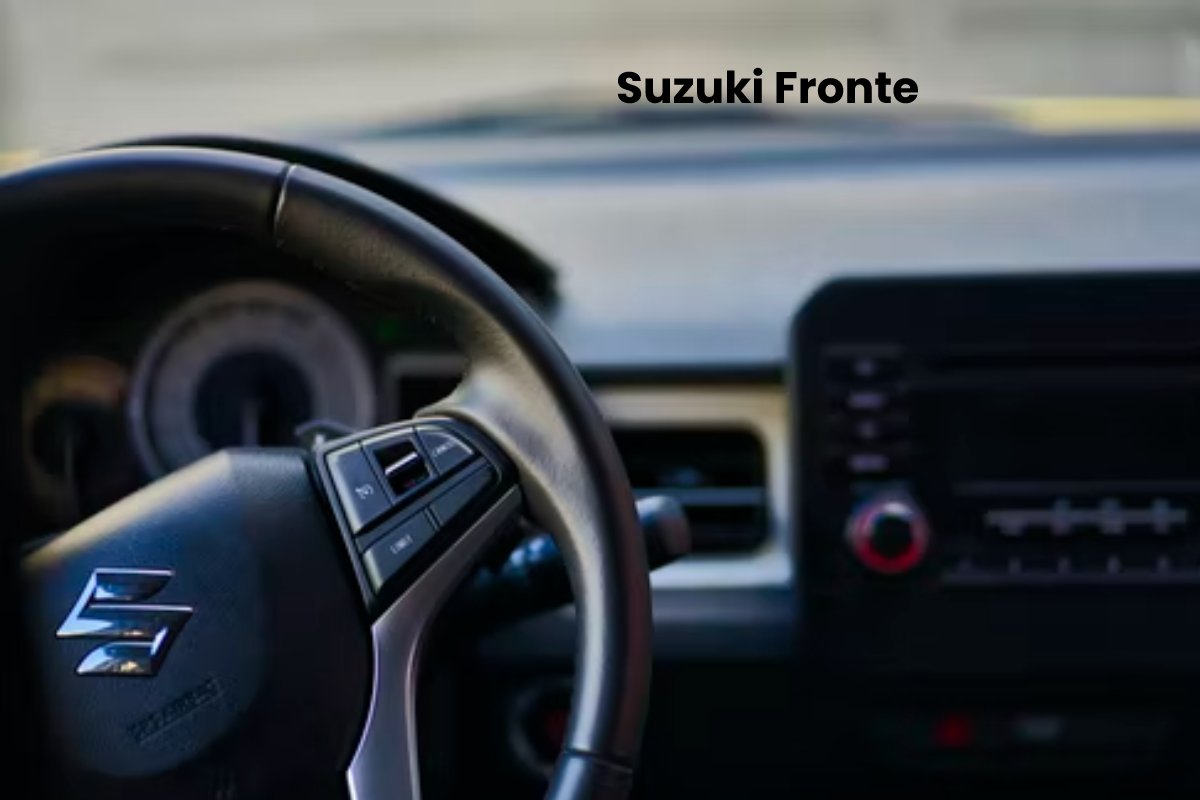Suzuki Fronte – In Japan, there are all kinds of rules. It is because the Japanese have a relatively large number of people on fairly unusable ground. So when Japan started motoring, there were soon rules for cars like the Suzuki Fronte. Japanese have rules about engine capacity, power and dimensions. Plus, the benefit that post-war Japanese were significantly smaller than Western Europeans due to lack of dairy and Mcdonald’s.
Table of Contents
Suzuki And Kei Cars
The type of cars for which the legal basis is establishing in 1949 became known as Kei Cars or ‘keijidōsha’ (light vehicle). And those were the most miniature cars that drive legally on Japan’s roads. At first, they used only to have a displacement of 150cc (which grew to 660cc), and their power was also subject to restrictions. However, they were exciting from a fiscal point of view and easy to park in busy Japanese cities. Half of the cars sold in Japan were of this type of model. So the concept was a success.
Suzuki’s Fronte
That car mostly inspires the system. Suzuki Fronte was introduced in 1967, and It is a civilized version of the Suzulight Van.
The original parent of the Suzuki Fronte was, The Lloyd LP400. The Suzuki had a transverse-positioned two-stroke twin in the front that drove the front wheels and an independent suspension. After only one year, the engine received a separate lubrication system, so mixed lubrication is unnecessary. And there were races with the Suzuki Frontes.
In 1967 Came The Second Generation Of Suzuki Fronte
The second-generation Suzuki Fronte had the 360cc three-cylinder two-stroke engine in the rear and rolled on 10-inch wheels. Initially, Suzuki marketed the newcomer as “the queen of Kei cars” and advertised it on television. The plan was to make 3,000 per month. But that soon turned into almost three times as much. This success led Suzuki also to make a version for the United States. But that was unsuccessful because it was “too small”.
The 1968 Suzuki Fronte SS delivered 27 hp, and after that, there was even an even sportier SSS. Suzuki signed Stirling Moss and TT winner Mitsuo Itoh for a trip from Milan to Naples. On the highway. The average speed on that route is 122.44 km/h.
The Export Version 475 Cc, 29 Pk Was Released In 1969
In that good year, the Suzuki Fronte also received a facelift. In April, he got another. And 1970 was time for the third generation of Frontes. He had an ‘aggressive’ style that became known as the ‘Stingray’ style with such a young man. Something General Motors laugh.
In terms of type descriptions, the Japanese also let loose – above all, the basic versions of the Suzuki Fronte are the ‘S’, the ‘SS’, the ‘SSS’ and the ‘SSS-R’. The ‘R’ indicates that the Suzuki had radial tires. In 1970 the letter ‘W’ adds. It represented water cooling.
1971 Was The Year Of The Suzuki Fronte Coupé Signed By Giugiaro
The two-seater equips with the liquid-cooled “W” power supply. In 1973 the Suzuki Fronte LC20 appeared with a completely new pattern of lines. It got a 2cm longer wheelbase, but dimensions remained 1995 x 1295mm to stay within Kei car regulations. But within those measures, there was still the possibility of presenting a four-door Fronte. Suzuki made the distinction clear in the offering: the types available were the two-door GU, GD, GH, GC, GT, GT Type II models and the four-door FU, FD, FH, FC, and FT models.
Meanwhile, the government made plans to limit urban air pollution by amending the Kei car law so that a maximum of 550cc large four-stroke engines would help clean the air. And so, the Suzuki Fronte 7-S arrived in 1976. And what did the seven ‘Ssen’ mean? Of course, for Space, Safety, Sense, Save money, Silent, Stamina and Suzuki TC. Of course.
Since Suzuki no longer had its two strokes in 1978 due to emissions testing, it was time for an intelligent plan. Or an emergency handle. Suzuki signed a contract with Toyota to buy Daihatsu blocks. Those midgets with a ‘4’ on the grille were not successful in sales. The two-stroke had a considerably more pleasant engine character.
The Later Developments Of The Suzuki Fronte?
We will come back to that again. But at least we have been surprised by the beautiful world of Kei cars. And the “trigger” in this case was the brochure material that now-retired auto publisher Ted Sluymer is putting up on his Facebook page. We also have an impressive archive whose digitization does not want to start due to the daily hustle and bustle. So once again, we dive into that.
And it’s so lovely when you sink into our gray cabinets. Because there is much more than Rollsen, Mercedes and Citroëns, and even those brands have done a lot. So, for example, I have a press file on the Citroen 3CV. Have you heard of it?
Conclusion
Suzuki is one of the market’s most trusted and vintage brands. Many customers are happy buying Suzuki cars. The Suzuki rose from the fronte generation and produced many more vehicles. The Suzuki fronte is the paramount roleplay in the Suzuki market capitalization.

